Do you have a question about the Panasonic KX-TCD450NZ and is the answer not in the manual?
List of included items and essential safety advisories for the telephone.
Crucial details on safe operation, environmental conditions, and battery handling.
Steps for connecting the phone's AC adaptor and telephone line.
Procedure for installing handset batteries correctly.
Guidance on charging the handset batteries before first use.
Information on expected talk and standby times for different battery types.
Explanation of symbols used throughout the user manual.
Steps for replacing handset batteries and selecting the correct battery type.
Identification of buttons, features, and ports on the handset and base unit.
Meaning of various icons displayed on the handset screen for status.
Instructions for powering the telephone on/off and setting the clock/date.
Methods for dialling phone numbers using pre-dialling or post-dialling.
Procedures for receiving calls and ending active conversations.
Enabling auto answer and temporarily silencing the ringer.
Adjusting the audio volume levels for calls on the handset.
Using the paging function to find a misplaced handset.
Using the hands-free speakerphone and muting the microphone during calls.
Using the redial list to call recent numbers.
Modifying numbers and clearing entries from the redial list.
Details on how Caller ID service works with your network provider.
Information about Call Waiting and guidance on local toll service usage.
Understanding how caller names, numbers, and status appear on the handset screen.
Viewing the list of incoming calls and redialling from it.
Modifying received numbers stored in the Caller ID list.
Deleting individual or all received call records from the Caller ID list.
Adding new contacts with names, numbers, and assigning them to categories.
Selecting different character sets for entering names and numbers.
Guide to inputting text and symbols using the keypad for phonebook entries.
Methods for searching and locating stored contacts in the phonebook.
Quickly finding contacts starting with a specific letter.
Reference table for characters available for phonebook entries across different languages.
Modifying, deleting contacts, and making calls using the phonebook.
Saving numbers from pre-dialling, redial, or caller ID lists into the phonebook.
Assigning and using speed dial numbers via hot keys.
Removing speed dial assignments from hot keys.
Transferring phonebook data between registered handsets.
Programming and configuring the handset alarm settings.
Adjusting ringer volume and selecting desired ring patterns for calls.
Enabling or disabling key tones, call waiting tones, and alarms.
Customizing what information is shown on the handset display in standby mode.
Configuring display during calls and selecting the handset language.
Setting up call barring to restrict certain types of calls.
Configuring direct call numbers and changing the handset PIN.
Locking and unlocking the handset keypad to prevent accidental use.
Using the Recall feature and configuring dialling pauses for PBX systems.
Setting or changing the PIN for base unit access and security.
Restricting calls and cancelling restriction settings for handsets.
Removing specific numbers from the call restriction list.
Configuring flash timing and pause duration for PBX compatibility.
Restoring all handset configurations to their factory default settings.
Restoring all base unit configurations to their factory default settings.
Adding new or optional handsets to the base unit for multi-unit operation.
Removing base units or handsets from the registered lists.
Configuring ringer modes for all or selected handsets.
Choosing the base unit for handset connection, including auto-selection.
Expanding system range by registering and operating multiple base units.
Making internal calls between registered handsets for communication.
Moving external calls between handsets or establishing conference calls.
Configuring the phone for direct handset-to-handset communication outside base range.
Enabling or disabling the direct communication feature.
Making and receiving calls using the Walkie-Talkie function.
Attaching the handset securely to clothing or a belt using the clip.
Connecting a headset for hands-free operation and convenience.
Guide for securely mounting the base unit on a wall.
Resolving issues related to blank or flashing displays and handset power.
Solutions for problems like no dial tone, inability to dial, or no ringing.
Fixing issues with redial function and missing Caller ID information.
Resolving battery indicator issues and handset registration failures.
Detailed technical data including frequency, channels, modulation, and power.
Information on unit connections and behaviour during power failures.
List of included items and essential safety advisories for the telephone.
Crucial details on safe operation, environmental conditions, and battery handling.
Steps for connecting the phone's AC adaptor and telephone line.
Procedure for installing handset batteries correctly.
Guidance on charging the handset batteries before first use.
Information on expected talk and standby times for different battery types.
Explanation of symbols used throughout the user manual.
Steps for replacing handset batteries and selecting the correct battery type.
Identification of buttons, features, and ports on the handset and base unit.
Meaning of various icons displayed on the handset screen for status.
Instructions for powering the telephone on/off and setting the clock/date.
Methods for dialling phone numbers using pre-dialling or post-dialling.
Procedures for receiving calls and ending active conversations.
Enabling auto answer and temporarily silencing the ringer.
Adjusting the audio volume levels for calls on the handset.
Using the paging function to find a misplaced handset.
Using the hands-free speakerphone and muting the microphone during calls.
Using the redial list to call recent numbers.
Modifying numbers and clearing entries from the redial list.
Details on how Caller ID service works with your network provider.
Information about Call Waiting and guidance on local toll service usage.
Understanding how caller names, numbers, and status appear on the handset screen.
Viewing the list of incoming calls and redialling from it.
Modifying received numbers stored in the Caller ID list.
Deleting individual or all received call records from the Caller ID list.
Adding new contacts with names, numbers, and assigning them to categories.
Selecting different character sets for entering names and numbers.
Guide to inputting text and symbols using the keypad for phonebook entries.
Methods for searching and locating stored contacts in the phonebook.
Quickly finding contacts starting with a specific letter.
Reference table for characters available for phonebook entries across different languages.
Modifying, deleting contacts, and making calls using the phonebook.
Saving numbers from pre-dialling, redial, or caller ID lists into the phonebook.
Assigning and using speed dial numbers via hot keys.
Removing speed dial assignments from hot keys.
Transferring phonebook data between registered handsets.
Programming and configuring the handset alarm settings.
Adjusting ringer volume and selecting desired ring patterns for calls.
Enabling or disabling key tones, call waiting tones, and alarms.
Customizing what information is shown on the handset display in standby mode.
Configuring display during calls and selecting the handset language.
Setting up call barring to restrict certain types of calls.
Configuring direct call numbers and changing the handset PIN.
Locking and unlocking the handset keypad to prevent accidental use.
Using the Recall feature and configuring dialling pauses for PBX systems.
Setting or changing the PIN for base unit access and security.
Restricting calls and cancelling restriction settings for handsets.
Removing specific numbers from the call restriction list.
Configuring flash timing and pause duration for PBX compatibility.
Restoring all handset configurations to their factory default settings.
Restoring all base unit configurations to their factory default settings.
Adding new or optional handsets to the base unit for multi-unit operation.
Removing base units or handsets from the registered lists.
Configuring ringer modes for all or selected handsets.
Choosing the base unit for handset connection, including auto-selection.
Expanding system range by registering and operating multiple base units.
Making internal calls between registered handsets for communication.
Moving external calls between handsets or establishing conference calls.
Configuring the phone for direct handset-to-handset communication outside base range.
Enabling or disabling the direct communication feature.
Making and receiving calls using the Walkie-Talkie function.
Attaching the handset securely to clothing or a belt using the clip.
Connecting a headset for hands-free operation and convenience.
Guide for securely mounting the base unit on a wall.
Resolving issues related to blank or flashing displays and handset power.
Solutions for problems like no dial tone, inability to dial, or no ringing.
Fixing issues with redial function and missing Caller ID information.
Resolving battery indicator issues and handset registration failures.
Detailed technical data including frequency, channels, modulation, and power.
Information on unit connections and behaviour during power failures.
| Brand | Panasonic |
|---|---|
| Model | KX-TCD450NZ |
| Category | Cordless Telephone |
| Language | English |
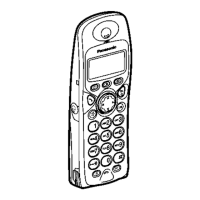

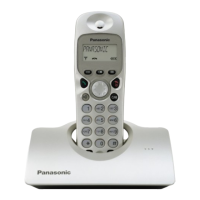
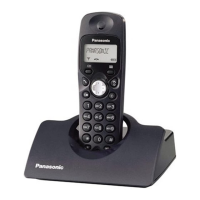
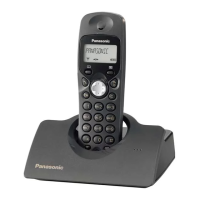

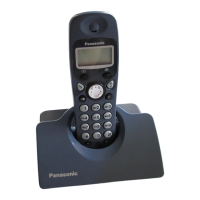
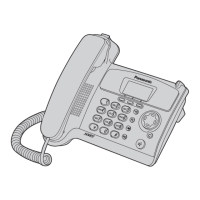

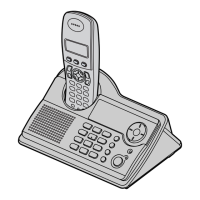
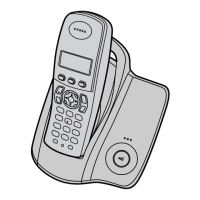
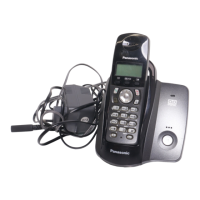
